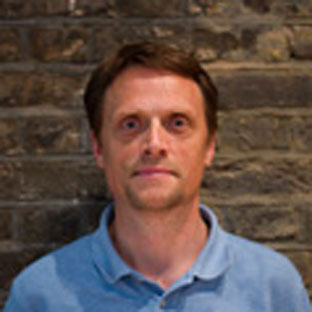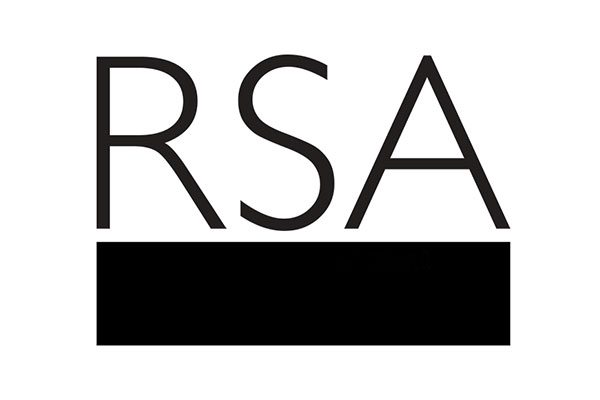A new piece of research enables me to return to a lonely personal crusade….
Over the last eight years, in well over a thousand blogs and as many lectures, I have kept returning to one set of ideas. I think they could be useful to policy makers, to organisational leaders, to anyone else interested in diagnosing social problems and developing solutions but also to all of us as we try to live effective lives.
Yet, however hard I try, I can’t turn the ideas into a meme; something which other people start to discuss and use and which, by entering the cultural bloodstream, takes on a life of its own.
The ideas are my interpretation of what is sometimes called ‘cultural theory’ and is itself a development of a framework which appeared first in the work of the founding father of sociology, Emile Durkheim, and was then developed by one of the 20th century’s most distinguished anthropologists, Mary Douglas.
My account is less rigorous but, I think, more accessible and more easily applied than many of the academic versions that have appeared over the years. For those who haven’t already tired of me talking about it, the theory – which was the basis of my 2013 annual lecture – makes the following key assertions:
There are four foundational ways of analysing the social world and of pursuing change.
These are three active ways; the hierarchical (think authority, state, strategy, bureaucracy), the solidaristic (think belonging, charity, culture), the individualistic (think competition, acquisitiveness, risk and innovation) and one which by its nature is less active, the fatalistic (think resignation, stoicism, passivity, indifference).
Each of the four ways has characteristics we tend to see as benign (respectively, leadership, values, ambition and stoicism) and malign (authoritarianism, tribalism, selfishness and apathy). The story each way of thinking tells about the world – the sources of its legitimacy - is in large part a critique of the other ways of thinking.
Each way – and particularly the three active ways - can also be seen as a way of solving problems, a source of energy. The best solutions to complex problems – of which we have more and more – is to combine the ways. And, as the ways are ubiquitous, if any aren’t part of a solution they are liable to become a barrier or a source of opposition to that solution.
However, as each way represents an implicit critique/attack on the others the solutions that combine the ways (‘clumsy solutions’) are always fragile. Through competing as accounts of change, one or two will become dominant, leading the other/s to become subversive (one of the reasons strong leaders tend, in the end, to fail). Stability is also undermined by changes in the context in which the organisation operates which favour one way over the others (think, for example, of how technology has gone largely from being a tool of hierarchy to an accelerator of individualism and, to a lesser extent, solidarity since the emergence of the social web).
There are several aspects of this theory which make it attractive. First, it is relatively easy to describe, understand and recognise. Second, it suggests progress is possible (through clumsy solutions) but that such success is fragile and contingent. Third, the theory is fractal: within an organisation which tends to be hierarchically oriented there will be pockets of individualism, solidarity and fatalism. And within these pockets there will also be fragments of each other way of thinking and so on down to the conflicted individual. Thus it describes the dynamics of large organisational change but also the dilemmas we face as individuals when deciding how to interpret and act.
But the reason I thought it worthwhile again to wheel out my favourite social theory is new research about the voices in our heads.
The British Psychological Society reports that a Polish academic has developed a taxonomy of the different kinds of inner voices that people experience. In two rounds of research two hundred participants were asked to think of the interlocutor with whom they most often have a dialogue in their own minds.
Dr Puchalska-Wasyl found that the participants' descriptions clustered in four distinct categories. "Faithful Friend" associated with strength and unity and positive emotion; 22 "Ambivalent Parent" associated with strength and love, but also ambivalence or negativity to the participant's irresponsible ideas; 32 matched the "Proud Rival" category, showing pride and self-confidence combined with a lack of closeness to the participant; and finally a category which first fitted the description of "Calm Optimist" – a relaxed interlocutor, characterised by low self-enhancement, little emphasis on contact with others, but in a way that participants perceived positively but on deeper analysis morphed into "Helpless Child", characterised by a low emphasis on self-enhancement, low scores on contact with others, and high negative emotion.
Intriguingly these categories can be mapped in a rough and ready way on to cultural theory’s ways of thinking: ‘faithful friend’ being the solidaristic voice, ‘ambivalent parent’ the heirarchical, and ‘proud rival’ being the individualistic and calm optimist/helpless child reflecting different (contented and despairing) expressions of fatalism.
This week at the RSA we have hosted the Buddhist sage Mattieu Ricard, popularly known as ‘the happiest man in the world’ and also David Brooks, whose new book ‘The road to character’ uses the stories of a number of exceptional people who seem to have developed remarkable levels of self-control, focus and capacity to love. But while I admire those with the character, courage or discipline to enable them to operate on a higher level, I think that most of us have to opt for a more modest success. This is to understand that our natures contain different competing ways of seeing the world and operating on it, and that being effective means recognising these voices and trying as best we can to hear them all enough and none of them too much.
The greatest potential of cultural theory is that it allows us to connect that private endeavour of wellbeing and effectiveness to the public tasks of problem solving and collaboration. And this, ultimately, is why I will keep banging on about it until somebody else takes an interest.
Related articles
-
Amazon’s banned PowerPoint. What a wonderful rebel idea!
Duncan Bartlett FRSA
Duncan Bartlett FRSA offers his thoughts on a recent RSA event with Matthew Syed.
-
Identity politics, social media, and tribalism: an interview with Jonathan Haidt
James Shield
Jonathan Haidt speaks with Matthew Taylor on polarisation, identity politics and the importance of social science for our collective future.
-
RSA JFN: Immune to failure - learning to thrive in the age of uncertainty
Philippe Valdois
Philippe Valdois FRSA reports back from an RSA JFN event where Fellows and guests heard from Alexandra Krawiec, the RSA's Connector in Poland.




Join the discussion
Comments
Please login to post a comment or reply
Don't have an account? Click here to register.
Hi Matthew
As I've previously shown - here: http://rsafellowship.com/group/human-capability-and-societal-transformation/forum/topics/the-olympics-offered-us-a-glimpse-of-the-integral-wisdom-of-clums - the various Cultural Theory voices map pretty directly onto other models such as the 'value memes' model of Spiral Dynamics (with its fatalistic Purple, Hierarchical Blue, Individualistic Orange and Solidaristic Green).
And there's a Teal/Yellow/Integral value meme that recognises all the previous voices and tries to hear them all enough and none of them too much, as you put it. (Due to its relativist political predilections Cultural Theory rejects any notion that this more complex, multi-faceted and encompassing voice might be a later - dare one say higher? - emergence. Seems obvious to me that it is.
Frederic Laloux who spoke at the RSA last year has been sharing case studies of organisations large and small that he believes epitomise a Teal/Yellow/Integral orientation (which honours all the voices).
He's launched a web platform, and will soon launch a wiki, to support all the leaders and change agents who are building these inspiring 'Next Stage' organisations. (And you can get a free copy of his inspiring book 'Reinventing Organisations - A Guide to Creating Organizations Inspired by the Next Stage of Human Consciousness' here: http://www.reinventingorganizations.com/pay-what-feels-right.html - and then pay whatever you feel like).
I'd argue that this may well represent the most fruitful example of the polyvocal approach that Cultural Theory advocates.
I'm working with another RSA Fellow to create a newsletter/website focused on news from these 'Next Stage' organisations. Should be launching fairly soon, I'll let you know. (I'd invite people to send me any 'Next Stage' organisations news!)
Matthew Mezey
matthewmezey at yahoo dot co dot uk
Hey Matthew,
I really like how you are combining models from the social and complexity sciences here. It sounds like we are on the same wavelength, as I have been working with the Evolution Institute to lay the groundwork for a new science of culture design. Would love to talk with you about it.
Here's an article introducing the concept:
https://evolution-institute.org/article/the-new-science-of-intentional-change/?source=tvol
Also, on the topic of creating a meme that spreads, it so happens that I am an applied meme researcher and may be able to help you out here. To get ideas to spread, one must intentionally shape the web of relationships in a social system -- building institutional capacity among people that supports social learning at the community scale. As a concrete example, this is how Neoliberalism came to be the dominant meme for economic thinking. Another article I recently co-authored with David Sloan Wilson and Robert Kadar describes how this happened and offers a solution that can help the new economic paradigm rise to prominence as a strong meme.
Check it out here:
https://evolution-institute.org/blog/a-new-powell-memo/?source=sef
Working together for the betterment of all,
Joe Brewer
Culture Designer
Your article made me think if you have tried to simplify theory rather than focus on transformation. I wondered about the differences and relationship between cultural action and cultural theory? I wondered if in our search to find the perfect theory it might stop action rather than cause it.
The internal commentary in our heads is transformed when we share it, whatever form it takes. Otherwise it is maintained as a personal theory rather than a cultural change. Perhaps the framework for transformation is not a set of words but a connected set of actions that move and inspire us. The power of a song or an image.
Be Authentic, Be yourself, Be passionate
I'm interested! I wasn't aware of your four ways, but have just written something (for a change programme in a big distributed voluntary organisation) that mirrors them uncannily. I began by noting a fatalistic attitude where change happens through churn and contingency. Then outlined 4 change approaches: Standardisation from the centre (heirarchy); Defining shared values (solidarity); Prototyping and rewarding solutions (individualism); and Growing participation (Connectivism). This latter is our recommended model for this particular organisation. I guess it could be categorised as a 'clumsy solution', a combination of values, creativity and solidarity. There's also a bit of heirarchy in there, disguised as giving voice. However, perhaps it could be defined as a distinct fifth way? Maybe this is where your penultimate sentence is leading?
This is an effective and provocative model. Do you have a drawing of it? If not, let me know and I will contribute one to the cause of better thinking.